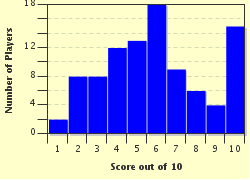Quiz Answer Key and Fun Facts
1. The first wave of feminism took place roughly between the late 1800s and the early 1900s in both the United States and the United Kingdom. Which of the following was NOT a crucial issue for feminists of the first wave?
2. The second wave of feminism took place between the 1960s and 1970s and it focused heavily on the many legal obstacles women faced with regard to their families, sexuality, bodies, and careers. Roe v. Wade was a 1973 landmark ruling by the U.S. Supreme Court that removed state and federal restrictions that prohibited women's access to abortion services. While this was one critical case of the second wave, which of the following was the other key piece of case law that emerged in this period?
3. During the third wave of feminism one of most prolific feminist gender theorists emerged; her theories are centered around power, gender, sex, and sexuality and she has asserted that classifying all women in one generalized category (with regard to their identities and rights) not only disallows women's individualism, but it also habitually reinforces gender stereotypes upon them. What is the name of this famous 1990s feminist gender theorist?
4. A big motivational factor in the spread of feminist ideologies came through feminist authors publishing feminist analytical and theoretical pieces. The topics of these works related to the imbalance of power between men and women, and women's lack of opportunities for individuality, autonomy, and success in the mainstream world. Which of the following authors has NOT penned a piece of classic feminist literature?
5. This woman was a key figure in second wave feminism, as she was not only the founder and the first president of the National Organization for Women, but she also published "The Feminine Mystique," which was heavily responsible for igniting the second wave feminist movement. What is the name of this legendary feminist writer and leader?
6. This former writer for "New York" magazine is the co-founder of the leading feminist periodical, "Ms. Magazine", as well as being the co-founder of the Ms. Foundation for Women. She gained national attention for her 1969 feminist article "After Black Power, Women's Liberation," which showed early supportive arguments for women's abortion rights. What is the name of this spokeswoman for the Women's Liberation Movement?
7. In 1971, the National Black Feminist Organization was founded, which focused on the many different oppressive systems and discriminatory prejudices that African American women faced in their daily lives, such as racism, classism, sexism, homophobia, and lesbophobia. While the organization disbanded in 1977, another critical Black Women's Feminist Organization was founded in Boston in 1974, which remains one of the most important Black socialist feminist organizations in the United States. What is the name of this critical feminist organization?
8. Carol Hanisch was the first feminist to identify the concept of the "personal as political;" during the second wave of feminism many "consciousness raising" sessions took place whereby women got together and shared their experiences, culture, and shared oppressions. By each individual having the opportunity to relate their own unique experience of oppression as a woman, it became obvious that the personal struggles women faced were also political struggles; therefore, the "personal is political." Which of the following is NOT a classic feminist book following these principles?
9. In 1969, Betty Friedan stated that she did not want to associate her feminist organization with the "lavender menace" (i.e. lesbians) because doing so would be detrimental to women's progress.
10. Everyone always assumes that "feminists" all think alike because they all call themselves "feminists." Feminism, as defined by Cheris Kramerae, is "the radical notion that women are human beings;" as human beings, feminists certainly don't always agree. Which of the following is NOT one of the big feminist ideological conflicts and shifts that has occurred in the 20th century?
Source: Author
KatieK54
This quiz was reviewed by FunTrivia editor
bloomsby before going online.
Any errors found in FunTrivia content are routinely corrected through our feedback system.

